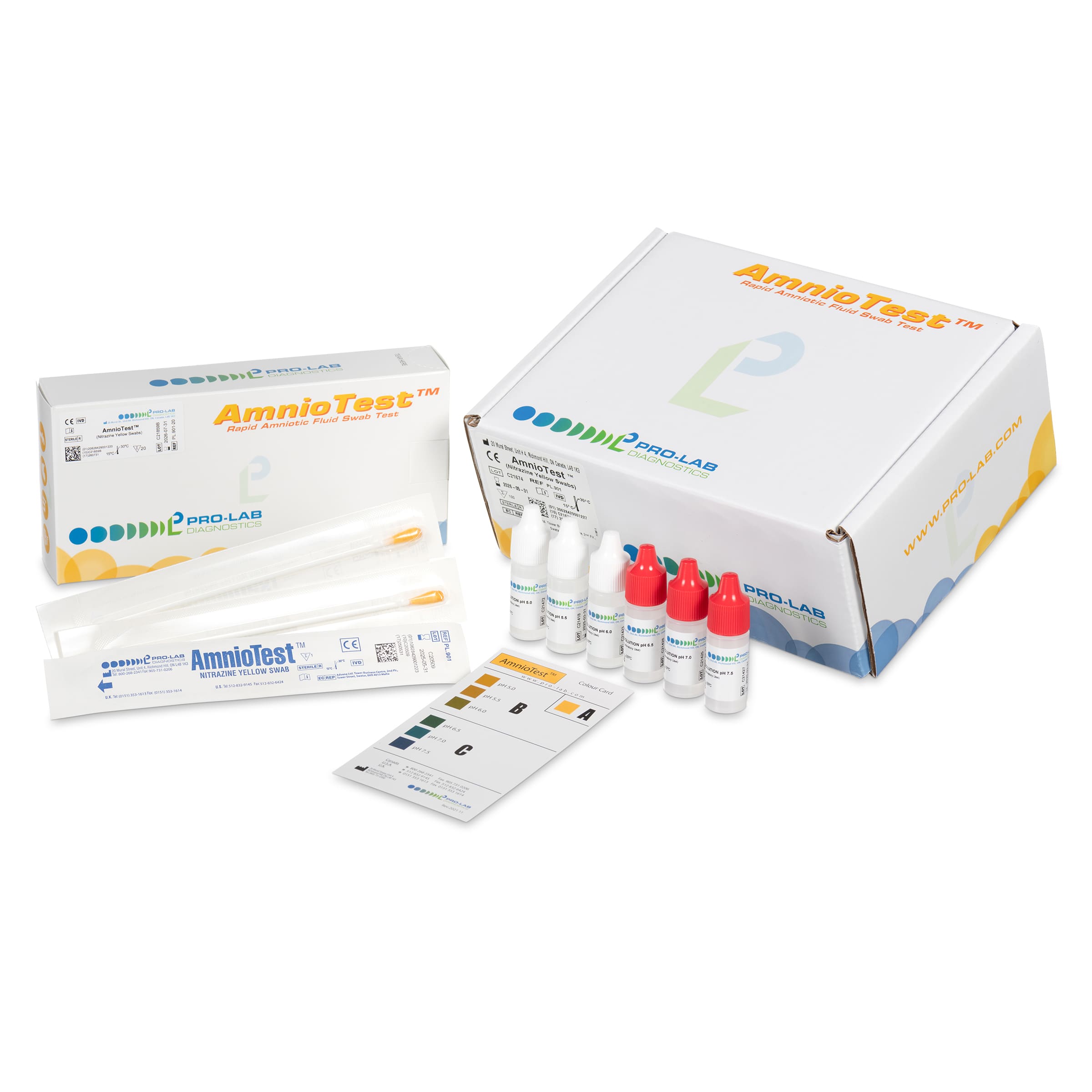AmnioTest™ Swabs
AmnioTest™ Consumables
FAQ
The pH of the vagina is normally acidic. Rupture of fetal membranes can result in small amounts of amniotic fluid leaking into the upper vagina. Amniotic fluid has a neutral pH. Thus, the presence of amniotic fluid elevates the pH of the upper vagina. AmnioTest™ is a sterile swab impregnated with nitrazine yellow dye that when brought into contact with the upper vagina will absorb fluid and develops a colour to correlate with the pH of the absorbed fluid ranging from pH 5.0 to pH 7.5. A possible ruptured membrane is indicated if the swab has a pH of 6.5 to pH 7.5, turning the swab dark green to navy blue. A colour interpretation card is included with each box of AmnioTest™. The colour squares on the card are only examples. Always use the colour description found in the IFU in combination with the colour squares as part of your interpretation. For example, pH 6.0 (indicative of an intact membrane) is an olive green, while pH 6.5 (indicative of a possible ruptured membrane) is a dark green.
Yes, however, you should use the squares on the colour interpretation card as examples in combination with the colour description in the IFU. For example, pH 6.0 (indicative of an intact membrane) is an olive green, while pH 6.5 (indicative of a possible ruptured membrane) is a dark green.
The benefits are as follows: AmnioTest™ comes in sterile, individually sealed, easy-to-open sleeves with identifiable expiry dates. AmnioTest™ conveniently combines nitrazine dye and the sampling swab, thus eliminating the extra, cumbersome steps of traditional pH paper testing. Using AmnioTest™ provides a standard method of practice for pH testing amongst staff. AmnioTest™ meets all POC and laboratory accreditation requirements with the Colour Interpretation Card and the Q.C. buffers to match the training Education PowerPoints.
Initially, it is essential to remember that the AmnioTest™ swab is not a protein-specific assay but a pH indicator. Therefore, it does not identify the amniotic fluid itself. Further, outside the vagina, isolated amniotic fluid may not maintain its basic pH, possibly due to its low buffering capacity.
AmnioTest™ is designed to aid in detecting ruptured membranes, not to confirm apparent ruptures. If there has been an obvious rupture, the pH of the vagina may no longer be elevated beyond a pH of 6.5. Thus, the swab will not turn blue.
A variety of factors can cause false positives. The most common cause of false positives is interfering substances that elevate the pH of the vagina, such as the presence of blood, urine, semen, vaginal infections, some topical creams, and antibiotics.
Yes, for example, if the patient’s clinical history indicates time from ROM greater than 12 hours, the pH of the vagina may no longer be elevated. Keep in mind, being a qualitative test, a negative result does not preclude the possibility of rupture of the fetal membranes. Other clinical findings should be considered when interpreting a negative result.
Yes, AmnioTest™ swabs all have identifiable expiry dates on each sleeve. There are six available AmnioTest™ Quality Control Buffers to match the colour interpretation card. For new users, it is recommended that Quality Control be performed per box with six swabs and all six buffer solutions so that the user can become familiar with the product and interpret the results. After this, the standard Q.C. regiment should be performed on a per LOT basis. Extra colour interpretation cards can be ordered in packs of 50 for individual staff members.
